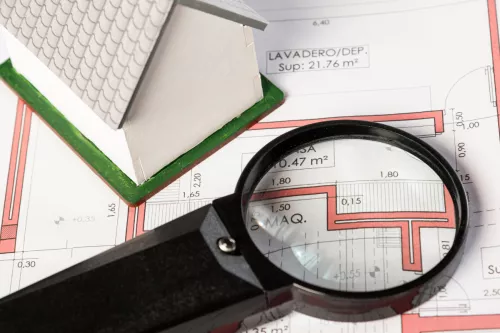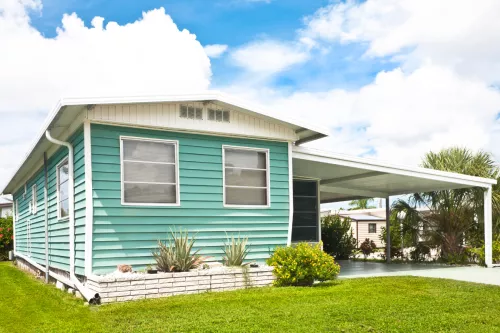The Tudor house, with its distinctive characteristics and historical roots, has long captivated the imagination of architects, historians, and homeowners alike. When thinking of Southern architectural designs, we might typically imagine variations of Colonial-style residences—characterized by their wooden construction, symmetry, shutters, and expansive porches.
Among them we have the Tudor style that also stands out as a recognizable type of house found in many significant Southern urban areas. Tudor architecture can be adapted to homes of all sizes, with smaller houses bearing a resemblance to quaint storybook cottages and larger estates mirroring the grandeur of English manor houses.
Here we will explore Tudor architecture, tracing its origins, understand its modern interpretations, and reveal where these timeless structures are most cherished. We'll also take you inside the Tudor home, and showcase design examples. Join us on this architectural voyage to discover the allure of Tudor homes.
What Makes a Tudor House: Its Characteristics
Tudor houses are instantly recognizable by their unique features, which blend medieval and early Renaissance influences. Characteristic elements include steeply pitched gable roofs, prominent cross gables, decorative half-timbering, tall, often feature large, uniquely shaped windows and ornate doors, and massive chimneys often topped with decorative chimney pots.
The use of brick, stone, and stucco in the exterior finishes adds to the distinctive Tudor aesthetic. These elements come together to create a storybook appearance that is both romantic and rustic. The asymmetrical design and absence of front porches contribute to their formal appearance, yet they blend beautifully with lush gardens, adding a welcoming touch to their exteriors.
What is the Tudor House History?
The Tudor architectural style is named after the Tudor dynasty, which ruled England from 1485 to 1603, and found its way to American shores in the mid-19th century, capturing the hearts of homeowners until the World War II era.
As Peter Pennoyer, a renowned architect, points out, these homes were originally crafted to withstand the harsh, wet winters of colder regions, making them a perfect fit for the northern United States. Despite their origins, Tudor homes have charmed their way into various other parts of the country, thanks to their distinctive style and historical allure.
This architectural trend, celebrated for its ornate detail and robust construction, continues to be a sought-after choice for those looking to infuse their homes with a touch of classic elegance.
What is a Modern Tudor?

Today's Tudor homes blend the enchanting allure of historic design, like half-timbering and sharply sloped roofs, with contemporary updates tailored for modern living. These homes adapt by using current materials such as engineered wood and advanced stucco, and feature open layouts that align with current lifestyle trends.
While maintaining the classic look with tall, slender windows, these elements are now enhanced with energy-saving glazing and a wider range of designs. Moreover, modern Tudors come equipped with luxurious amenities, from gourmet kitchens and spa-like bathrooms to sophisticated home automation, elevating everyday comfort with a touch of timeless elegance.
Where are Tudor Houses Most Popular?
Tudor houses are most commonly found in regions that were influenced by British architectural styles, such as the United States, Canada, Australia, and, of course, the United Kingdom. In the U.S., Tudor Revival homes are particularly prevalent in the Northeast and Midwest, where they often appear in suburban neighborhoods and historic districts established in the early to mid-20th century.
The Interior of a Tudor
The interior of a Tudor home is as distinctive as its exterior, often featuring rich woodwork, detailed paneling, and ornate fireplaces. The rooms tend to be cozy, with a warm and inviting atmosphere created by the use of dark woods and rich fabrics.
Leadlight windows and exposed timber beams are common, enhancing the historic feel. Modern Tudor homes may incorporate these traditional elements but often feature more open floor plans and contemporary finishes.
The ceilings boast decorative dark-stained beams that add character without bearing any structural load. The walls within these spaces are typically adorned with white plaster and complemented by dark wood trims or are fully clad in richly stained wooden panels, creating a distinctive contrast.
The flooring varies across living areas, presenting options such as porcelain tile, hardwood, or brick. Moreover, these homes often feature grand wooden staircases that elegantly extend across multiple levels, enhancing the interior's grandeur.
Examples of Tudor House Design and Style

Tudor houses vary widely, from grand manors like England's Compton Wynyates to the charming Tudor bungalows of American suburbs. Modern interpretations might feature lighter, more open interiors while maintaining classic exterior elements.
These homes demonstrate the versatility and enduring appeal of Tudor design, whether in a historic estate or a contemporary family home. Here are some examples:
Classic Tudor Revival Homes
These are perhaps the most recognizable, featuring steeply pitched gable roofs, decorative half-timbering on the façade, tall, narrow windows often with leaded glass, and large brick or stone chimneys. An example might be a residential home in an established neighborhood, built in the early 20th century, embodying the romantic vision of English country living.
Modern Tudor Homes
These homes blend traditional Tudor characteristics with contemporary design, incorporating modern materials like engineered wood and synthetic stucco. They might feature open floor plans, large, energy-efficient windows while retaining the classic exterior Tudor elements like steep roofs and timber detailing.
Tudor Cottages
Smaller in scale, these charming homes resemble storybook cottages with their quaint half-timbering, casement windows, and often, beautifully landscaped gardens. They capture the essence of Tudor design on a more intimate level, perfect for those seeking a cozy, fairy-tale-like dwelling.
Luxury Tudor Estates
On the higher end, you'll find expansive Tudor estates that resemble English manor houses, complete with sprawling grounds, multiple chimneys, elaborate timber work, and stately entrances. These homes are designed to impress, offering a modernized version of Tudor grandeur with all the amenities of high-end contemporary living.
Urban Tudor Apartments
In cities, Tudor style can also be found in apartment buildings or townhouses, where the distinctive architectural features are adapted to fit urban living. These might include the characteristic timber framing, steeply pitched roofs, and grouped tall windows, providing a touch of historical elegance amidst the cityscape.
People also ask
Can Tudor houses be energy efficient?
Yes, with updates such as improved insulation, energy-efficient windows, and modern HVAC systems, Tudor homes can be made more energy-efficient.
Are all Tudor homes historic?
Not all. While many Tudor homes were built during the Tudor Revival period of the early 20th century, new homes continue to be built in the Tudor style, incorporating modern materials and technology.
Is it expensive to maintain a Tudor house?
Maintenance costs can be higher than for some other styles, due to the detailed exteriors and the potential need for specialized materials or craftsmanship.

 Marcio Vasconcelos
Marcio Vasconcelos





